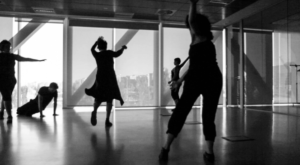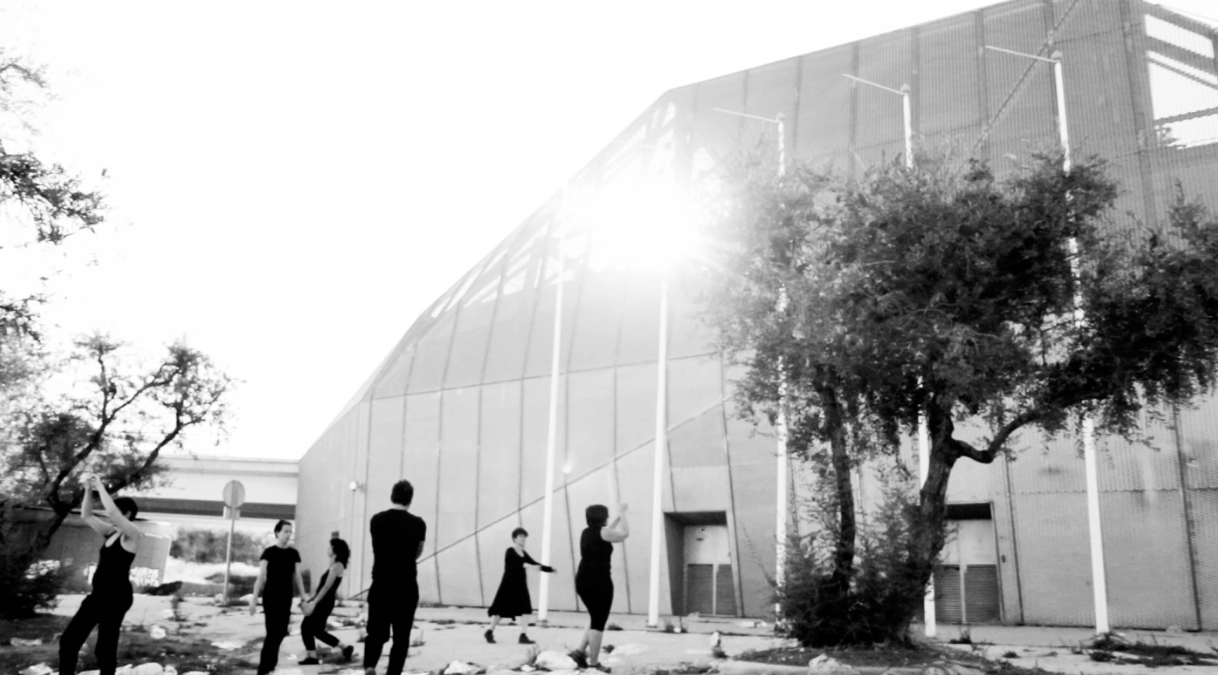
Witches Lab.
Toxic Land.
Tales of us.others
are the 3 pieces that emerged from this research-creation.
“I bet my nipple to grow” [I risked my nipple to improve]
Letizia spoke.
She then signed this phrase with her hands.
We all stood around and tried to repeat the movement.
She was wagering with her breast.
Her right hand was in a fist, her thumb was poking out between her middle and pointer finger.
As we practiced the movement phrase she told us about the life of her nipple.
It was removed due to breast cancer and just after the surgery she was asked if she would consent to offer her nipple to research. She pictured her nipple in a crystal bottle on a lab shell. Where might my nipple have gone?
The above story emerged at an oncogrrrls project in Zaragoza, Spain. The oncogrrrls project, a creative laboratory instigated by Caro Novella as a temporal and itinerant artistic community, is a performative critical intervention about the experiences and narratives of transiting oncological treatment with women, queer, and trans individuals. In December 2016, over a month-long laboratory/exploration, four different groups met in four different Spanish cities (Barcelona, Zaragoza, Granada and Madrid) over three days at each site, with the aim to explore creative possibilities to perform oncological diagnosis and medicalization differently. The overarching theme: How do we become beyond medicalization?
Attending closely to scientific literature that describes the modes of action of certain kinds of chemotherapy compounds, one notices that molecular interactions form more nuanced and intriguing relationships than those which mainstream oncological literature performs. Inspired by both these molecular relations and by Manning and Massumi’s Sense Lab Event, Society of Molecules, Caro named each of the Spanish local nodules as ‘moléculas’ (molecules). Thinking with Stengers (2011) on Whitehead, these molecules became parts of a differentiated yet relational whole, peculiarly sensitive to modifications of the other’, always in entangled movement, figured as a mode of collaboration that performed new nuanced and intriguing oncological relations.
Our scoring of onco-chemo-body relations thinks with a dance fascia lab at UC Davis where scores allow for a kind of improvisation in relation to science studies on fascia. These studies train bodily attention to the habits that prevent new questions from emerging. In this kind of training that entangles bodies and biological data, scoring becomes a mode of body work. In an essay from 2012, “Dance Your PhD: Embodied Animations, Body Experiments, and the Affective Entanglements of Life Science Research” Natasha Myers (2012), both a dancer and science and technology scholar, examined the proliferation of Dance Your PhD contests around the world and showed that dance can be read as a kind of body-work that helped scientists figure out how their molecules (or other objects of inquiry) move and interact. Thinking with Myers, underlines the body-work scoring in the oncogrrrls, and that it continuously asks what a particular understanding of onco-chemo-body can do? In the questioning, new kinds of bodies can emerge. Echoing scoring as body work, choreographer Jonathan Burrows (2011) writes: “For me, one pleasure of a score is to come back to the body with information which the body must figure out, in the process of which you momentarily break habitual patterns.” In our onco lab we came to think of the “why me” question as the kind of habitual pattern that was upholding the possessive individual. Breaking the habit of the ‘me’ was materialized in the intra-action (Barad 2012) of body-work, a movement between bodies. Body-work contributes to the endless differentiation of what critical dance studies calls corporeality and allows for another kind of bodying work alongside the kind that medicalized onco-body diagnosis enacts. A somatic score of resistance we call tenderizing allows us to sense into new modes of thinking doing onco-relations.
In the practice of scoring onco-relations we were interested in how this practice might create an ecology where we as subjects were changing, becoming ready (Goldman 2011). Not just changing the subjects ability or capacity but also their forms of attention and their ability to articulate. Scoring a particular reading of onco-relations became what might appear to be a kind of dance improvisation,where two or more dancers engage in a tacit conversation. In our case we are experimenting with the push and pull between bodies, between the model or text or reading, treatment protocols or diagnosis we were working with, and the felt embodied sense. Within this improvisational play, bodies (human and nonhuman) and meanings get made inside these dance experiments. Myers and Dumit (2011) call this haptic creativity, where bodies are used to figure out the forms, functions and movements of biological understandings.
